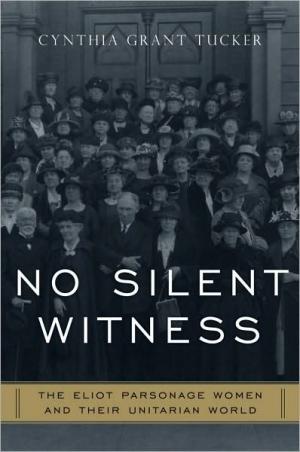No Silent Witness: The Eliot Parsonage Women and their Unitarian World

Group biography is notoriously difficult, for all the reasons that biography itself is hazardous, compounded by the number of people brought to center stage, and, in this case, the geographical and temporal sweep of the subject matter. To make a single life a coherent narrative with episodes that build systematically and climax, with a psychologically complex yet recognizably unified character, and with a sense of thematic consistency is to fashion something that life is not.
For projects such as Tucker’s to succeed, the author must create at least the illusion of a shared experience among a group of women traversing the nineteenth and early twentieth centuries and the American landscape from Boston to St. Louis to Portland. They are connected genealogically—Abigail Adams Cranch (1817-1908) and William Greenleaf Eliot (1811-1887) and their descendants—and they are bound by their often contentious, often radical, and often underestimated participation in the history of Unitarianism in the United States.
In portraying the “full-throated wives and daughters” of the men who were most prominent in the Unitarian Church in the nineteenth and twentieth centuries, the author offers some sharply focused details about the challenges women faced and the different types and degrees of oppression they suffered as they struggled to be heard as members of their religious communities. As almost all nineteenth century memoirs and documentary accounts reveal, women’s lives were inevitably consumed by disease, the death of children, and the constraints placed upon them by marriage. That some of these women could become religious leaders, advocate for women’s suffrage, and defy even the expectations of their own congregations is a remarkable testament to their courage and resilience.
No Silent Witness is a valuable resource for anyone interested in the development of American liberal theology in its opposition to Calvinist Protestantism. But the author’s resistance to chronology and the multiplicity of characters that appear in this panorama mitigate against the reader’s strong desire to spend time with some of these women, to get to know them as they negotiated roles for themselves as ministers’ wives, and even, in a couple of instances, as preachers themselves.
One of the troubling through-lines in the narrative is Unitarian resistance to women’s influence in the church. Instead of celebrating the remarkable creativity and energy of the women who were such a central part of the early success of the Unitarian movement, leaders of the movement self-consciously sought to “masculinize” it by purging women preachers, downplaying women’s contributions, and appropriating rhetoric from the cult of masculinity that has loomed so large in the American lexicon. The result of this strategy was a near-catastrophic decimation in the church’s numbers by the turn of the century, with a large number of women permanently alienated and finding new homes in other emerging religious traditions or in a more liberalized “mainstream” Protestantism.
In the twenty-first century Unitarian Universalism (the name reflecting the merger in 1961 of two liberal theological traditions) is a relatively small liberal religious organization proud of its historical commitment to social justice and its rejection of doctrinal dogmatism. It is now, as in its formative days, a spiritual home for powerful and unorthodox women committed to social justice and to breaking taboos against women’s religious leadership. No Silent Witness is a helpful corrective to the tendency to romanticize Unitarian history and to offer hagiographic accounts of the early Unitarian leadership. Although this book is ostensibly about the contributions women made, it is also about the resistance they faced from their preacher-husbands and fathers and from their own congregations. Not surprisingly, the narrative is replete with the sort of fractious theological and denominational disputes, rivalries, and even scandals that seem inevitably a part of human experience and which we erase from our historical memories at our peril.
One editorial correction must be made for any subsequent printing of this book: the author writes about ministers’ wives complaining about being “gypped by their husbands’ low pay.” This is a stunning racist slur in an otherwise thoughtful and erudite book.